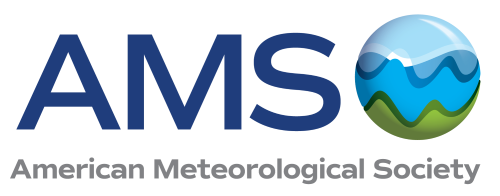(866)223-5699
(866)223-5699


Founded: 1919
Headquarters: Boston, Massachusetts
Website: ametsoc.org
The AMS is the premier organization for professionals in the atmospheric and related sciences. With over 12,000 members, including meteorologists, climatologists, and educators, the AMS provides a platform for knowledge exchange and professional development.
The AMS is dedicated to advancing atmospheric and oceanic science, promoting public understanding of weather and climate, and supporting research that enhances societal resilience to weather-related risks.

Founded: 1975
Headquarters: Norman, Oklahoma
Website: nwas.org
The NWA connects operational meteorologists and weather enthusiasts. It bridges the gap between research and practice, ensuring weather forecasts and warnings reach the public effectively.
The NWA emphasizes the practical application of meteorological research, helping forecasters, broadcasters, and emergency planners deliver accurate and actionable weather information.

Founded: 1976
Headquarters: Asheville, North Carolina
Website: stateclimate.org
The AASC represents state climatologists who provide critical climate data and analysis at regional and local levels. These experts play a pivotal role in monitoring climate trends and supporting decision-makers.
The AASC focuses on climate variability, extreme weather events, and how these phenomena affect agriculture, water resources, and public safety.

Founded: 1980
Headquarters: Madison, Wisconsin
Website: cimss.ssec.wisc.edu
CIMSS is a research institute dedicated to advancing satellite meteorology. It collaborates with NOAA and NASA to develop innovative technologies for weather prediction and climate monitoring.
CIMSS enhances weather forecasting accuracy through satellite innovations, ensuring communities are better prepared for severe weather events.

Founded: 2000
Headquarters: Boulder, Colorado
Website: wrfic.noaa.gov
WRFIC focuses on developing advanced weather prediction models and tools. A NOAA-supported initiative, WRFIC brings together researchers, meteorologists, and technology developers.
WRFIC aims to revolutionize weather prediction by integrating high-resolution modeling and AI-driven tools, helping industries and governments prepare for future climate challenges.

The AMS is a leading organization for atmospheric and related sciences professionals, founded in 1919 and headquartered in Boston, Massachusetts. It publishes renowned journals like Weather and Forecasting and the Journal of Climate, hosts the Annual AMS Meeting, and offers certifications such as the Certified Broadcast Meteorologist (CBM) program. Its mission includes advancing scientific research, promoting public awareness, and enhancing resilience to weather-related risks.
Founded in 1975 and based in Norman, Oklahoma, the NWA focuses on the practical application of meteorology. It organizes the annual NWA Meeting, provides scholarships for aspiring meteorologists, and offers the NWA Seal of Approval for broadcasting excellence. The organization ensures that accurate forecasts and warnings effectively reach the public.
3. What role does the American Association of State Climatologists (AASC) play in climate research?
The AASC, established in 1976 and located in Asheville, North Carolina, represents state climatologists who provide localized climate data and analyses. It collaborates with NOAA and other agencies, maintains archives of historical climate data, and supports decision-making on issues like agriculture, water resources, and public safety. The AASC focuses on addressing climate variability and extreme weather impacts.
4. What is the focus of the Cooperative Institute for Meteorological Satellite Studies (CIMSS)?
CIMSS, founded in 1980 and headquartered in Madison, Wisconsin, specializes in satellite meteorology. Collaborating with NOAA and NASA, it develops innovative satellite tools for weather prediction and climate monitoring. Its contributions include improving hurricane forecasts, training meteorologists in satellite data, and advancing research in atmospheric sciences.
5. How does the Weather Research and Forecasting Innovation Center (WRFIC) contribute to weather prediction advancements?
WRFIC, established in 2000 in Boulder, Colorado, is a NOAA-supported center dedicated to improving numerical weather prediction. It developed the widely used Weather Research and Forecasting (WRF) Model, offers training in advanced forecasting tools, and integrates AI-driven technologies for precise weather predictions. WRFIC's innovations aid industries and governments in preparing for climate challenges.
Conclusion
These meteorological associations in the USA are essential to advancing the science of weather and climate. From fostering groundbreaking research to training the next generation of meteorologists, their work ensures that communities are better informed and prepared for weather and climate challenges. Whether you're a weather enthusiast or a professional, these organizations offer invaluable resources and opportunities to deepen your understanding of the dynamic world of meteorology.
Leave a comment